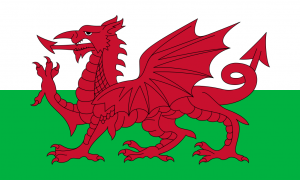Language/Welsh/Culture/Welsh-History
Welsh history is rich and varied, covering a long period of time, from prehistoric times to the present day. In this lesson, we will explore some of the key events and figures that have shaped Welsh history and identity.
Prehistoric Wales
Wales was first inhabited by humans around 230,000 years ago during the Paleolithic era. These early humans left behind various artifacts, such as stone tools and weapons, which have been found across the country.
During the Neolithic era, which began around 4,000 BC, people began constructing stone circles and burial chambers. One of the most famous Neolithic structures in Wales is the chambered tomb of Pentre Ifan, which dates back to around 3,500 BC.
The Bronze Age in Wales saw the introduction of metalworking, and the construction of hillforts and other fortified sites. One of the most famous Bronze Age sites in Wales is Tre'r Ceiri, an Iron Age hillfort in Gwynedd, which was occupied from around 200 BC to AD 400.
Welsh Princes and the Norman Conquest
During the early medieval period, Wales was divided into several separate kingdoms and principalities. These included Gwynedd, Powys, Deheubarth, and Gwent. Each kingdom had its own ruling prince or king who was responsible for the administration of his territory.
In the 11th century, the Norman conquest of England began, and soon the Normans turned their attention to Wales. In 1063, the Norman lord Harold Godwinson invaded Wales and defeated its ruler, Gruffydd ap Llywelyn. However, Gruffydd's son, Bleddyn, was able to assert his control over parts of Wales and forge alliances with other Welsh princes.
In the late 11th century, the Normans again invaded Wales, this time under the command of William the Conqueror's son, William Rufus. The Welsh princes were unable to unite against the Normans, and in 1093, the Norman lord Robert of Bellême captured the fortress of Montgomery.
King Edward I and Welsh Independence
In the 13th century, King Edward I of England launched a successful campaign to conquer Wales and bring it under English rule. He built a series of castles across the country, including Caernarfon Castle, Conwy Castle, and Harlech Castle, to help consolidate his control over the Welsh.
In 1282, the Welsh prince Llywelyn ap Gruffudd led a revolt against the English, but he was eventually defeated and killed in battle. This marked the end of Welsh independence and the beginning of hundreds of years of English rule over Wales.
The Industrial Revolution and Welsh Identity
During the 18th and 19th centuries, Wales underwent a period of rapid industrialization, with coal mining, iron works, and steel mills becoming major industries. The growth of these industries led to a massive increase in population as people moved from rural areas to the new industrial towns and cities.
The Welsh language and culture came under threat during this period, as industrialization brought with it the English language and customs. However, the Welsh began to resist this cultural assimilation, and a Welsh nationalist movement began to emerge in the late 19th century.
Welsh Nationalism and the 20th Century
In the 20th century, the Welsh nationalist movement grew in strength, with the establishment of organizations such as Plaid Cymru and the Welsh Language Society. These groups sought to promote and protect Welsh language and culture, and to fight for greater autonomy and self-government for Wales.
In 1955, the government of the United Kingdom established the Welsh Office, which was responsible for the administration of Wales. This was seen as a significant step towards greater Welsh autonomy and recognition within the United Kingdom.
In recent years, the Welsh Assembly has become the main governing body for Wales, with powers over healthcare, education, and other areas of policy. The Welsh Language Act of 1993 also gave Welsh equal status with English in Wales, and efforts continue to be made to promote and preserve the Welsh language and culture for future generations.
Famous Figures in Welsh History
Throughout its long history, Wales has produced many famous and influential figures. Some of these include:
- Owain Glyndŵr - a Welsh prince who led a revolt against English rule in the early 15th century.
- David Lloyd George - a Welsh statesman who served as Prime Minister of the United Kingdom from 1916 to 1922.
- Richard Burton - a Welsh actor who was known for his roles in films such as "Who's Afraid of Virginia Woolf?" and "The Spy Who Came in from the Cold".
- Roald Dahl - a Welsh author who wrote many famous children's books, including "Charlie and the Chocolate Factory" and "Matilda".
Conclusion
Welsh history is diverse and fascinating, reflecting Wales' long and proud heritage. From its prehistoric origins to its modern-day struggles for greater autonomy and self-government, Wales has always been a unique and important part of the United Kingdom. As we continue to learn about Welsh language and culture, it is important to also be mindful of the events and figures that have shaped Welsh history and identity.

